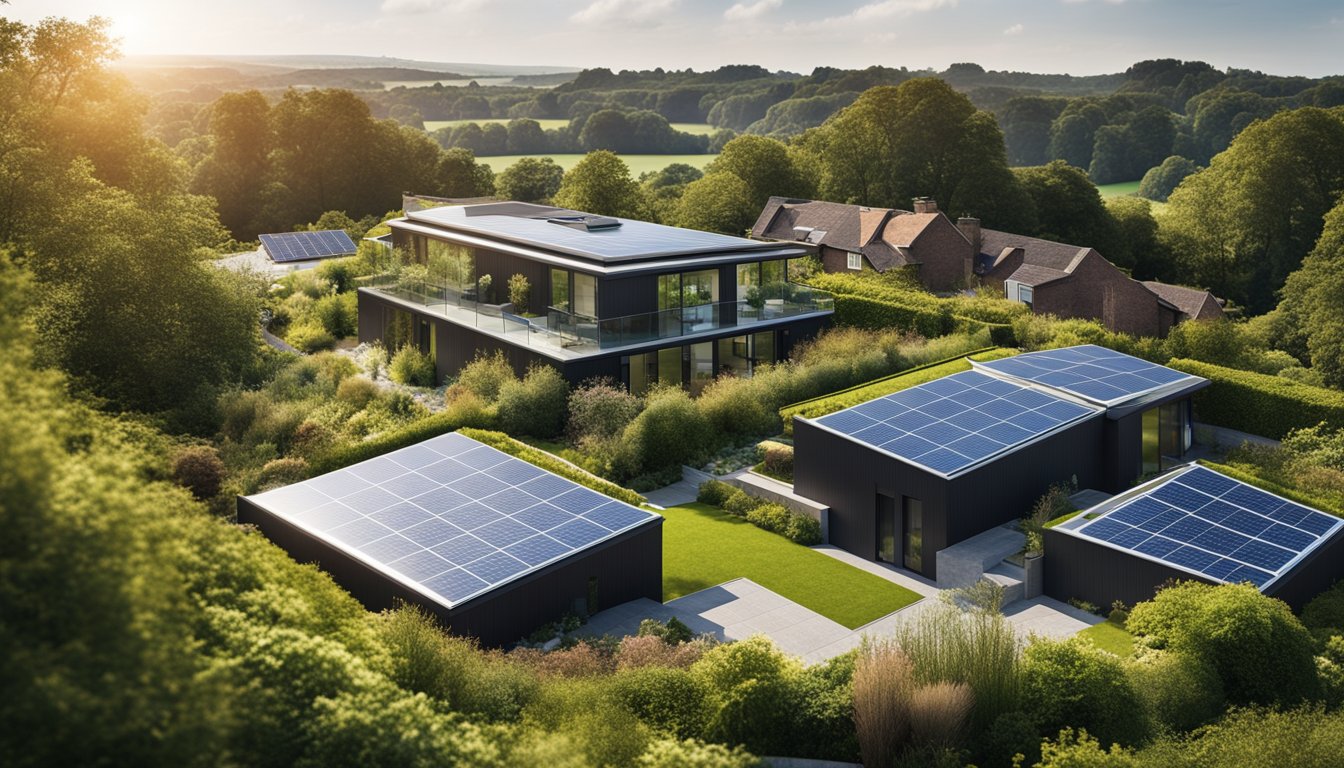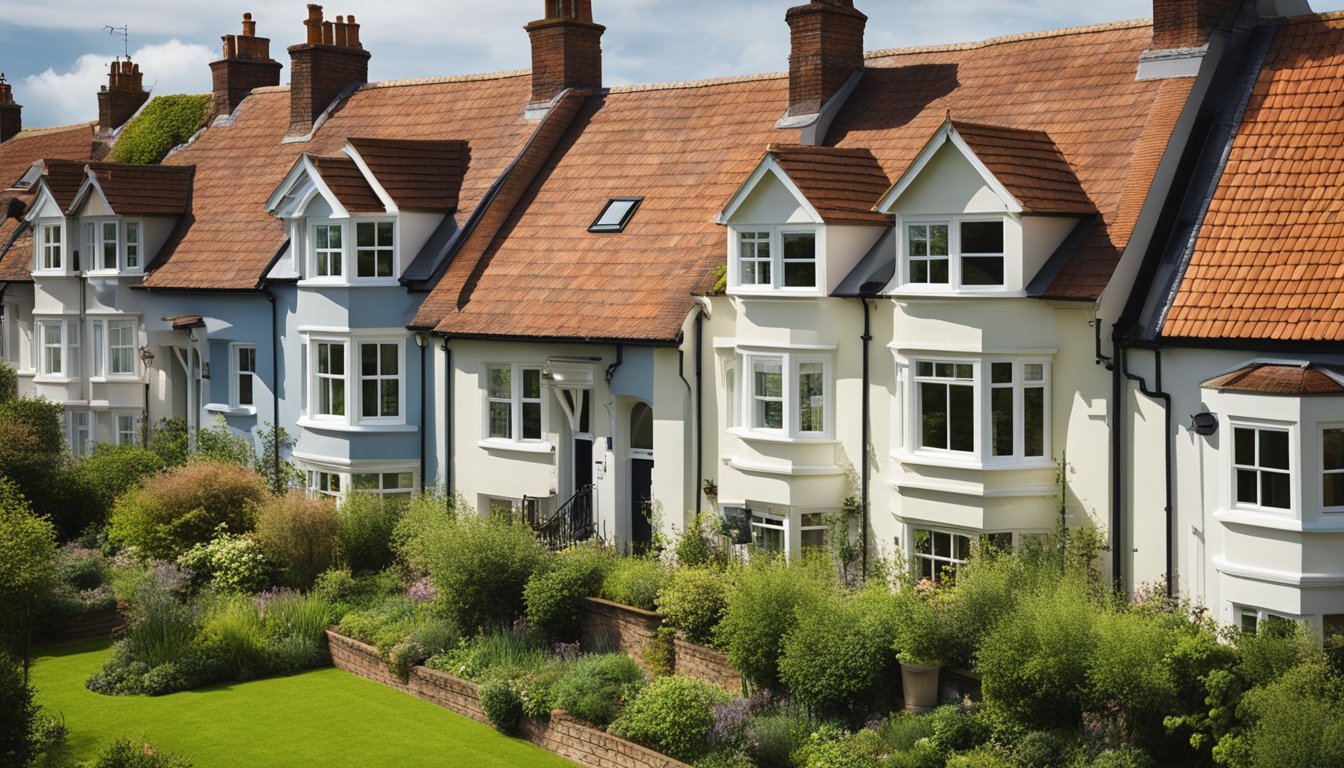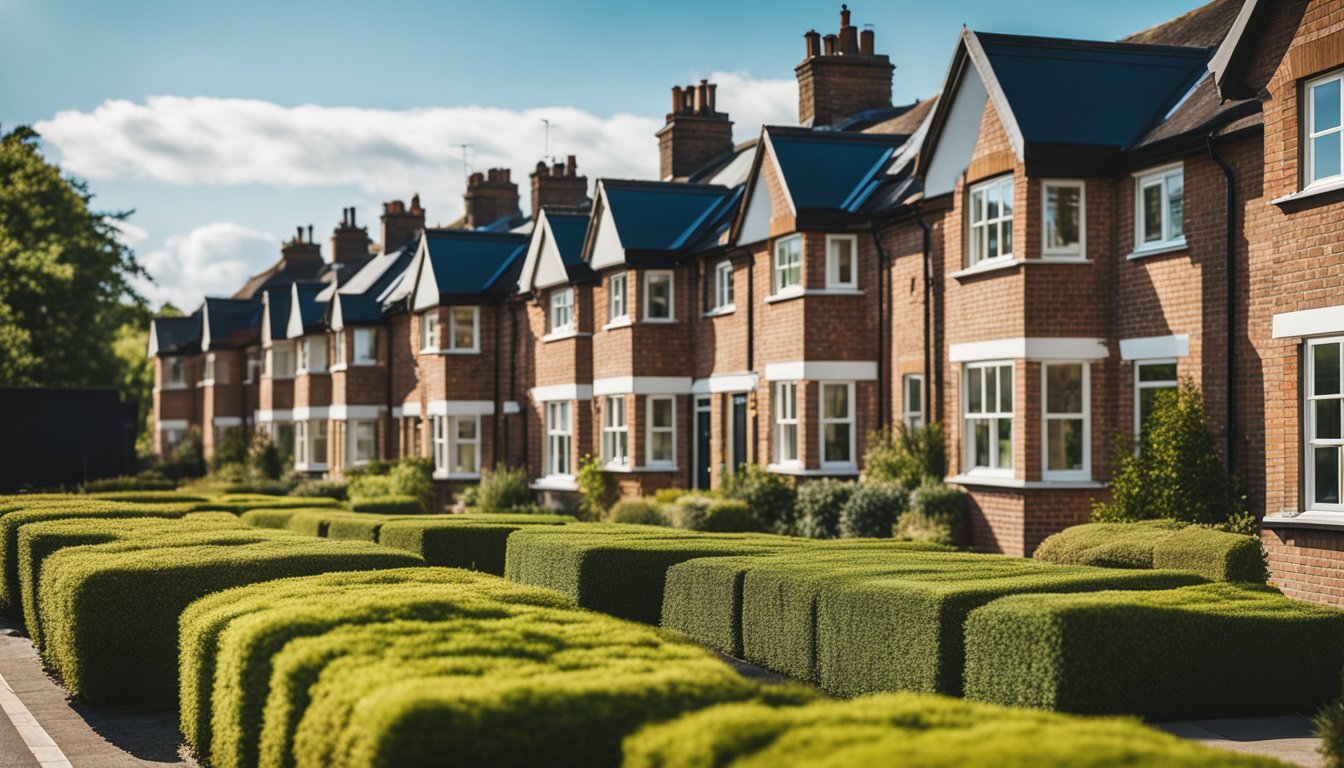Late updated: 12 Nov 2024 10:11
Written by: Eleanor Hartman
Benefits Of Green Roofs For UK Homes: Eco-Friendly Living Solutions
In recent years, green roofs have gained significant attention across the UK as a sustainable and innovative solution for urban living. These eco-friendly rooftops are not just aesthetically pleasing; they offer a multitude of benefits that extend beyond individual homes. In fact, green roofs can boost property value, reduce energy consumption, and enhance urban biodiversity. Such advantages are particularly appealing to those who seek to make environmentally conscious choices without compromising on modern comforts.

The allure of green roofs lies in their ability to transform unused rooftop spaces into vibrant habitats that improve air quality and manage stormwater runoff. By incorporating a green roof, homeowners contribute to a cleaner, healthier environment while simultaneously enjoying the practical perks of insulation and natural beauty. These roofs not only serve as a functional part of the building but also as a visual connection to nature in urban landscapes.
Our exploration into the benefits of green roofs will cover essential aspects like cost, feasibility, and long-term impact on both individual properties and the broader ecosystem. By understanding these factors, homeowners can make informed decisions that provide lasting positive effects on their communities and the planet.
Key Takeaways
- Green roofs increase property value and improve urban biodiversity.
- They reduce energy consumption and enhance air quality.
- Green roofs manage stormwater runoff effectively.
Key Advantages of Green Roofs
Green roofs offer numerous benefits that are both practical and beneficial for the environment. They enhance urban life by improving air quality, provide financial savings through energy efficiency, and create pleasant living spaces that boost well-being.
Environmental Impact
Green roofs significantly improve air quality by absorbing pollutants and carbon dioxide, while releasing oxygen. This is essential in cities, where air pollution is often a concern. By adding vegetation to rooftops, we create habitats that promote urban biodiversity, offering a home for birds, bees, and insects. This increased biodiversity is important for sustaining healthy ecosystems.
Additionally, green roofs mitigate the urban heat island effect by cooling the immediate environment. The vegetation acts as a natural thermal buffer, reducing rooftop temperatures. This cooling effect not only contributes to lower urban temperatures but can also play a role in reducing a building's cooling demands.
Economic and Energy Considerations
The economic benefits of green roofs are significant. They provide improved insulation, leading to greater energy efficiency. This results in lower energy bills, as the need for air conditioning decreases during warmer months. Improved insulation also keeps buildings warmer in winter, which further reduces energy costs.
The longevity of the roof can be extended with green roofing systems. By protecting the underlying roof membranes from ultraviolet radiation and temperature fluctuations, the lifespan of a roof is increased. For commercial buildings, this means less frequent roof replacements, translating to long-term savings.
Property values can also see a boost from installing green roofs. Homeowners and businesses may find that the aesthetic and environmental benefits increase their property's appeal, potentially leading to higher resale values.
Quality of Life Improvements
Green roofs play a crucial role in enhancing our quality of life. They offer a tranquil escape from the concrete jungle, transforming unused roof space into green spaces or rooftop gardens. These areas provide a retreat for relaxation and social activities.
Moreover, vegetative roofs contribute to better air quality, which supports healthier living environments. They also aid in noise reduction by absorbing sound, creating quieter indoor spaces in bustling urban areas.
Stormwater management is another benefit. Green roofs can retain significant amounts of rainfall, reducing stormwater runoff. This alleviates pressure on urban drainage systems and helps prevent flooding, contributing to a more sustainable urban environment.
Design and Maintenance of Green Roofs

When designing and maintaining green roofs for UK homes, it is crucial to consider different types of roofs and the components required for a successful setup, as well as the proper methods for installation and upkeep. These factors ensure that green roofs are both sustainable and enhance property values.
Types and Components
Green roofs are classified into mainly two types: extensive and intensive. Extensive green roofs are lighter, requiring minimal substrate depth and offering low maintenance. These are ideal for environments where structural support is limited. On the other hand, intensive ones are more robust, supporting a diverse range of plants, but they require greater substrate depth and stronger structural support.
Components critical to any green roof include a waterproof membrane, root barrier, drainage systems, and a growing medium or substrate. Each component must be carefully selected to suit the roof type and intended use. The material choice affects both the efficiency and lifespan of the roof.
Our design approach towards green roofs should focus on sustainability and aesthetic aspects, ensuring long-term resilience and integration into the surroundings.
Installation and Upkeep
The installation of green roofs can be done either through professional services or as a DIY project. Professional installation ensures adherence to safety and structural guidelines, which can be crucial for larger or intensive green roofs. Conversely, for simple extensive green roofs, a DIY approach is feasible, requiring familiarity with the necessary green roof technology and tools.
Maintenance requirements vary with roof type. Extensive roofs demand minimal upkeep, focusing primarily on seasonal inspections and weeding. Intensive roofs, however, require regular care, including watering, fertilisation, and periodic structural assessments. The choice between professional maintenance services and self-management should consider cost, time investment, and the complexity involved. Keeping in mind these factors will help us enhance the lifespan and performance of our green roofs.
Frequently Asked Questions

Green roofs offer significant environmental and economic benefits for UK homeowners. They enhance air quality, support urban biodiversity, and offer energy savings. Structurally, they require careful planning to ensure viability on existing buildings.
What are the primary environmental advantages of installing a green roof on a UK home?
Green roofs improve air quality by filtering dust and pollutants and converting CO2 into oxygen. They also retain rainfall, reducing the risk of flooding. Additionally, these roofs help manage stormwater and reduce runoff, crucial in preventing urban flood damage.
How can green roofs contribute to energy savings in residential buildings?
Green roofs provide insulation, reducing the energy needed for heating and cooling. The layer of vegetation shields homes from extreme temperatures, maintaining a cooler environment in summer and a warmer one in winter. This natural insulation leads to lower energy bills and reduced carbon footprints.
In what ways do green roofs support biodiversity in urban areas within the UK?
Green roofs create habitats for birds, insects, and plants. By offering a space for various species to thrive, these roofs boost urban biodiversity. They transform vacant spaces into thriving ecosystems, contributing to local ecological resilience.
What are the key structural requirements for implementing a green roof on an existing UK property?
Implementing a green roof requires assessing the building's structural integrity. The roof must support additional weight from soil and plants, usually ranging from 120 to 200 kg/m². Professional consultation ensures proper drainage and waterproofing, safeguarding against potential damage.
How do green roofs mitigate the effects of urban heat islands, particularly in densely populated UK cities?
Green roofs lower ambient temperatures by providing a cooling effect. The vegetation absorbs less heat compared to traditional roofing materials. This cooling effect is instrumental in reducing the overall temperature in urban areas, combating the urban heat island effect effectively.
What financial incentives are available for homeowners in the UK who wish to install green roofs?
Homeowners may access grants and funding schemes aimed at promoting green infrastructure. These incentives reduce initial installation costs, making green roofs a more feasible option. Researching local council programmes and government schemes can uncover available financial support.